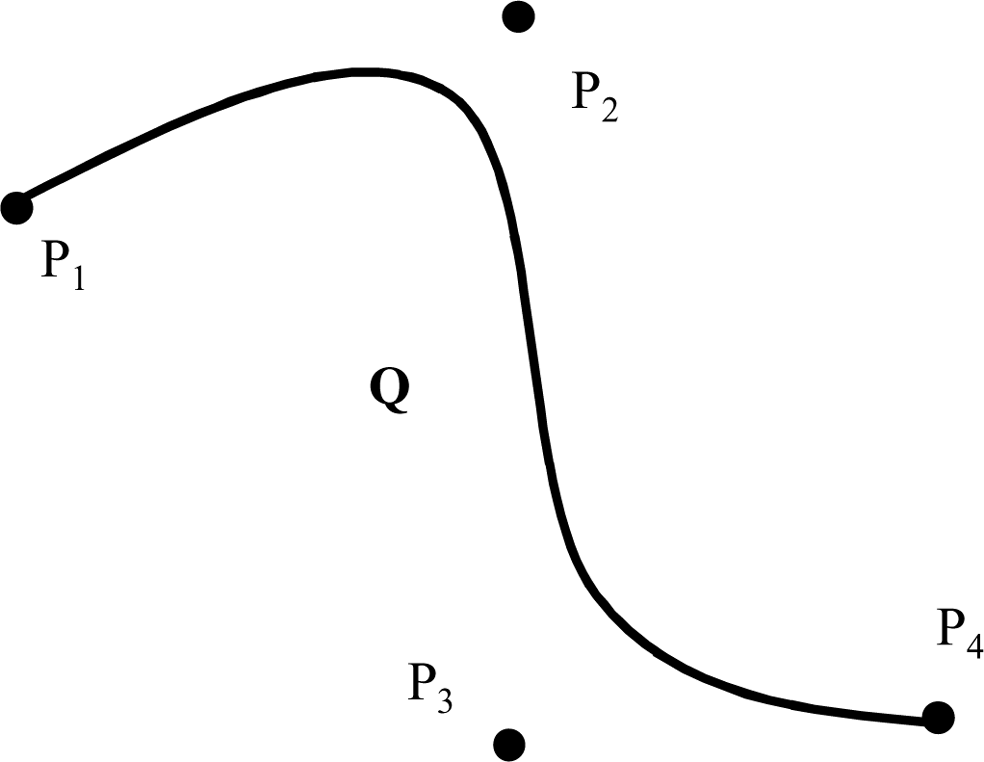B-spline Curves:
Suppose that you have to represent a very complicated, curved shape approximated by, say, 20 points. If we design this shape by using a Bezier, we shall need a degree 19 curve. Such curves are hard to maintain/modify and calculate. We should prefer to work along lower degree functions for computational purpose. Furthermore, in spite of a curve by a single high degree function is not good while we change shapes - as each control point has some influence on the shape of the curve. Therefore, changing the location of P18 will modify the shape (a little) close the control point P2. But frequently, in design, we should like more "localized" control on shape alteration. Now we study a method to solve out both of the above problems.
The solution to the difficulty is the following: divide the whole shape into smaller segments, and signify each segment along a low order polynomial. The math's of this simple scheme is not too easy, but we will look at the basics at least. The figure below illustrate this idea, where the curve C (u) is built up of 3 segments, represent as Ci (u), i = 1, 2, 3, the domain of Ci is over ui - 1 î X_î_Xi, and u0 = 0 < u1 < u2 < u3. We now can utilize any of the conventional (for example. Ferguson, power basis, Bezier etc.) mechanisms to defined each curve segment Ci, however to be useful, we should ensure that at the intermediate vertices, known as the breakpoints, the curves maintain some level of continuity.

Figure: B-Spline Curve